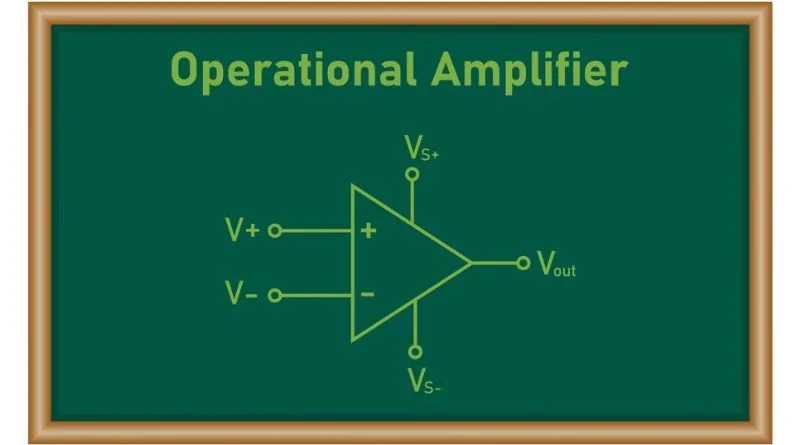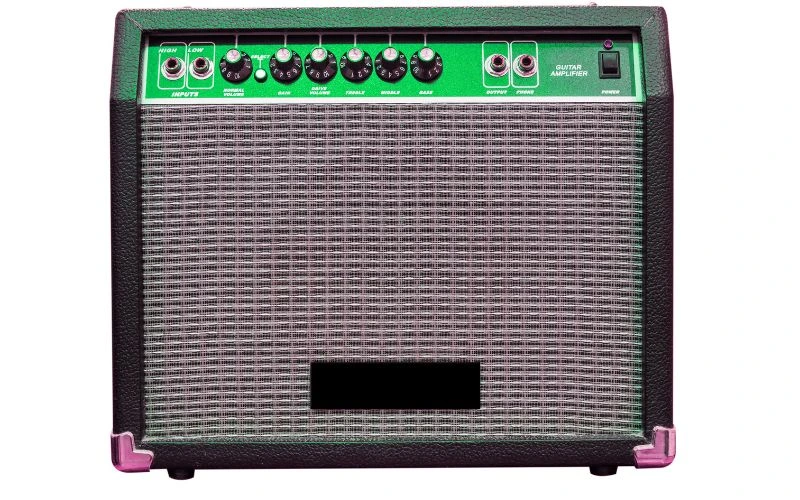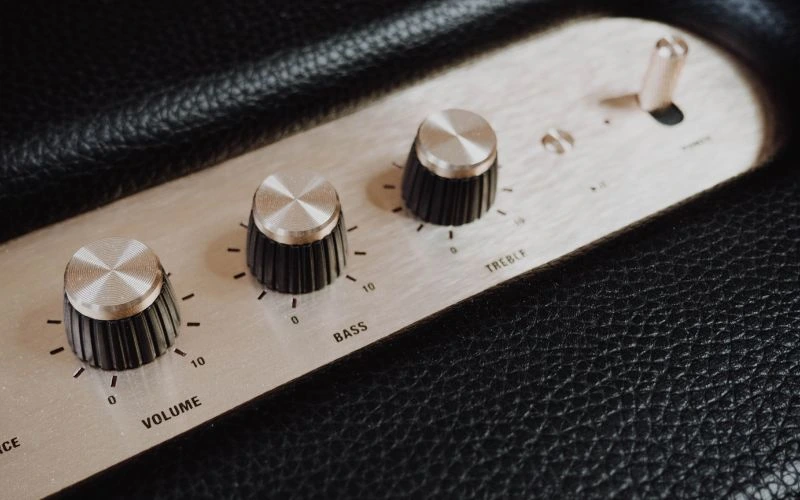
The world of electronics is a fascinating realm of innovation and discovery. At the heart of many electronic devices is a crucial component known as the ideal operational amplifier, or operational amplifier for short. This discrete device is crucial for amplifying signals, performing mathematical operations and serving as the basis for countless electronic circuits.
An ideal operational amplifier is a theoretical design, a device with infinite gain, infinite input impedance, zero output impedance, and infinite bandwidth. Although no physical op amp can truly achieve these ideal characteristics, understanding the concept of an ideal op amp is essential to understanding the principles and applications of this indispensable component.
The versatility of the ideal op amp is truly remarkable. It can be configured to perform a variety of functions, from simple amplification to complex filtering and signal processing. Its ability to amplify and manipulate signals accurately and quickly has made it an integral part of audio equipment, telecommunications systems, medical devices, and countless other electronic applications.
In electronics, the ideal operational amplifier is a building block for more complex circuits. By combining multiple operational amplifiers and other components, engineers can create circuits that perform complex tasks such as analog-to-digital conversion, voltage regulation, and active filters. The possibilities are virtually endless and limited only by the developer's imagination and ingenuity.
In this series of articles, we will look at how the ideal operational amplifier works and examine its various features, applications, and limitations. We will cover op amp configurations, feedback, op amp specifications, and practical design considerations with op amps. Whether you are an experienced engineer or a curious enthusiast, this series aims to provide a comprehensive understanding of the ideal operational amplifier and its role in modern electronics.
Join us on this journey of discovery, unlocking the secrets of the ideal operational amplifier and unlocking the secrets behind its widespread use in countless electronic devices. Together we explore the fascinating world of this essential component and reveal the potential for innovation and creativity it offers.
What is an ideal operational amplifier?
An ideal operational amplifier, an operational amplifier, is a key component in electronic circuits. It is a device that amplifies voltage signals and performs mathematical operations such as addition, subtraction and integration. The term “ideal” refers to the theoretical properties of an operational amplifier that make it an invaluable tool for engineers and designers.
One of the most important characteristics of an ideal operational amplifier is its infinite open-circuit gain. This means that the output voltage of the op amp is directly proportional to the voltage difference between its two input terminals. In practice, this allows the operational amplifier to significantly amplify even the smallest input signals.
Another characteristic of an ideal operational amplifier is its infinite input impedance. This means that the op amp does not draw any current from the input source, ensuring that the input signal is not affected by the presence of the op amp. This high input impedance allows the operational amplifier to be used in a variety of applications without disturbing the circuit to which it is connected.
Furthermore, an ideal operational amplifier has zero output impedance, which means it can deliver any amount of current to the load without being limited by its internal resistance. This feature allows the operational amplifier to drive various loads without distortion or loss of signal quality.
Furthermore, an ideal operational amplifier has infinite bandwidth, meaning it can amplify signals of any frequency without loss or distortion. This makes it suitable for applications where low and high frequency signals need to be amplified.
To summarize, an ideal op-amp has infinite open-loop gain, infinite input impedance, zero output impedance, and infinite bandwidth. These properties make it an essential part of many electronic circuits, enabling precise amplification and mathematical operations.
What are the characteristics of an ideal operational amplifier?

An ideal operational amplifier or operational amplifier is a key component in electronic circuits. It is a device that amplifies the difference between two input voltages and produces an output voltage proportional to this difference. The ideal operational amplifier has several characteristics that make it an indispensable tool in circuit design.
First, an ideal op-amp has infinite open-loop gain. This means that the output voltage is directly proportional to the difference between the input voltages, regardless of the magnitude of the input signals. This high gain allows for precise amplification of small signals.
Second, an ideal operational amplifier has an infinite input impedance. This means that it does not draw current from input sources, ensuring that input signals are not influenced by the operational amplifier. This high input impedance allows accurate measurement of the signal and avoids loading effects on the input circuit.
Third, an ideal op amp has zero output impedance. This means it can drive any load without affecting the output voltage. This low output impedance ensures that the op amp can provide a stable and consistent output signal.
Furthermore, an ideal operational amplifier has infinite bandwidth, allowing it to amplify signals of any frequency without distortion. It also features zero offset voltage and zero input bias current, ensuring that the output voltage accurately reflects the input difference.
In summary, the characteristics of an ideal operational amplifier include infinite open-loop gain, infinite input impedance, zero output impedance, infinite bandwidth, zero offset voltage, and zero input bias current. These properties make the ideal operational amplifier a versatile and reliable component in electronic circuits.
What are the applications of an ideal operational amplifier?
Operational amplifiers or ideal operational amplifiers are used in many different industries. Their versatility and high performance make them an essential part of many electronic circuits. Let's explore some of the common applications of an ideal operational amplifier.
One of the main applications of an ideal operational amplifier is signal amplification. By providing high gain, operational amplifiers can amplify weak signals to a desired level, making them suitable for audio systems and instrumentation. Operational amplifiers are also used in active filters, where they help shape the frequency response of a circuit. Their ability to provide accurate and adjustable gain makes them ideal for this application.
Another important application of operational amplifiers is analog-to-digital and digital-to-analog converters. Operational amplifiers play a crucial role in conditioning analog signals before conversion and reconstructing analog signals from digital data. They help maintain accuracy and linearity in the conversion process.
Operational amplifiers are often used in feedback control systems. They can be used to implement proportional, integral and derivative control functions, making them indispensable for applications such as motor control, temperature control and robotics.
Additionally, operational amplifiers are used in voltage and current control circuits. They can stabilize voltage levels, limit current, and protect sensitive components from damage.
Operational amplifiers are also used in waveform generation, oscillators, and waveform shaping circuits. They can generate various waveforms, such as sine, square, and triangle waves, which are used in a variety of applications, including audio synthesis, communications, and test equipment.
In summary, ideal operational amplifiers have applications in a variety of areas, including signal amplification, filtering, control systems, conversion, and waveform generation. Their high performance, versatility and precise properties make them an indispensable part of modern electronic circuits.
What are the limitations of an ideal operational amplifier?

Due to their exceptional properties, excellent operational amplifiers are widely used in various electronic circuits. However, despite their numerous advantages, they present certain limitations that engineers must take into account. Understanding these limitations is critical to the development and implementation of reliable and efficient electronic systems.
One of the main limitations of an ideal operational amplifier is its inability to operate with infinite gain. Although excellent op amps are known for their high gain, in reality they have a limited gain range. This limitation is due to the operational amplifier's internal circuitry, bandwidth, and power supply limitations. Engineers must select the appropriate operational amplifier with the desired gain for their specific application.
Another limitation of an ideal operational amplifier is its inability to operate with zero input bias current. In practice, operational amplifiers have a low input bias current, which can cause errors in certain applications. This bias current can cause voltage changes and affect the accuracy and stability of the circuit. Designers must take this limitation into account and use techniques such as input bias current compensation to minimize its impact.
Ideal operational amplifiers also have a limited output voltage range. Although they can amplify signals, they cannot generate voltages above a certain range determined by the supply voltage. This limitation can result in distortion or clipping of the output signal if the input exceeds the voltage range of the op amp. To avoid these problems, engineers must ensure that the input signal remains within the acceptable range.
In summary, although ideal operational amplifiers offer many advantages, they also have limitations that engineers must consider. These limitations include limited gain, limited input bias current, and limited output voltage range. By understanding and considering these limitations, designers can optimize the performance and reliability of their electronic systems.
What are the most important parameters of an ideal operational amplifier?
An ideal operational amplifier or operational amplifier is a key component in many electronic circuits. It was designed to have certain properties that make it extremely versatile and useful for a variety of applications. Understanding the key parameters of an ideal operational amplifier is critical for engineers and designers working with these devices.
One of the most important parameters of an ideal operational amplifier is its infinite gain. This means that the output voltage of the op amp is directly proportional to the voltage difference between its two input terminals. The gain is so high that even a small input voltage can produce a large output voltage.
Another important parameter is the infinite input impedance. This means that the operational amplifier does not draw power from the input source, allowing it to be connected to a wide variety of input devices without affecting its performance. The high input impedance also ensures that the op amp does not place any load on the circuit it is connected to.
Furthermore, an ideal operational amplifier has zero output impedance. This means it can drive any load without being affected by the load impedance. It can supply the load with the same voltage that it receives at its output terminal.
Furthermore, an ideal operational amplifier has infinite bandwidth, allowing it to amplify signals of any frequency without distortion. It also has an unlimited slew rate, allowing it to respond instantly to changes in the input signal.
In summary, the main parameters of an ideal operational amplifier are infinite gain, infinite input impedance, zero output impedance, infinite bandwidth and infinite slew rate. These properties make the perfect operational amplifier an extremely versatile and powerful component in electronic circuits.
What is the difference between an ideal op amp and a real one?

An operational amplifier or operational amplifier is a key component in electronic circuits for signal amplification, filtering and processing. When discussing operational amplifiers, two terms often come up: ideal and real. Although both types serve the same purpose, there are significant differences between them.
An ideal operational amplifier is a theoretical concept used as a reference point in circuit analysis. It has infinite input impedance, zero output impedance, infinite gain and perfect linearity. In other words, it amplifies the input signal without distortion, regardless of frequency or amplitude. This makes it an invaluable tool in theoretical calculations and circuit design.
On the other hand, a real op amp is a physical device with limitations and imperfections. It has finite input and output impedances, limited gain and non-linear behavior. These imperfections can cause errors and distortions in the amplified signal. Real operational amplifiers also have bandwidth limitations, meaning they can only amplify signals within a certain frequency range.
One of the biggest differences between ideal and real op amps is the presence of feedback. Excellent op amps require the use of negative feedback, which helps stabilize the circuit and improve performance. Real operational amplifiers require feedback to compensate for limitations and achieve desired functionality.
Another difference is in the power supply requirements. Although ideal op amps can operate from a single power supply, real op amps typically require two power supplies to function properly.
It is crucial that engineers and circuit designers understand the differences between ideal and real op amps. This allows them to take real-world component limitations into account and design circuits that meet specific requirements.
In summary, ideal and real operational amplifiers differ in their characteristics, limitations and behavior. While excellent operational amplifiers serve as a theoretical reference, real operational amplifiers are the physical devices used in practical applications. By understanding these differences, engineers can design circuits that meet desired specifications and performance.
What is the ideal circuit configuration for an op amp?
Ideal operational amplifiers or operational amplifiers are essential components in electronic circuits. They are widely used in a variety of applications, including amplification, filtering and signal conditioning. Understanding the various circuit configurations for ideal operational amplifiers is crucial to the effective development and analysis of electronic systems.
One of the most common operational amplifier circuit configurations is the inverting amplifier. In this configuration, the input signal is applied to the inverting terminal of the operational amplifier while the non-inverting terminal is grounded. The output is obtained from connecting the input resistor and the feedback resistor. The relationship of these two resistors determines the gain of the inverting amplifier.
Another widely used configuration is the non-inverting amplifier. Here, the input signal is applied to the non-inverting terminal while the inverting terminal is grounded. The output is taken from the output terminal of the operational amplifier. The gain of the non-inverting amplifier is determined by the ratio of the feedback resistance to the input resistance.
The unity gain voltage follower or buffer is another important operational amplifier configuration. In this configuration, the input signal is directly connected to the non-inverting terminal while the output is taken from the op-amp output terminal. The voltage follower offers high input impedance and low output impedance, making it useful for impedance matching and isolation.
Other operational amplifier configurations include the summing amplifier, the differential amplifier, and the integrator. Each configuration has its unique properties and applications.
In summary, understanding the ideal operational amplifier circuit configurations is essential for the development and analysis of electronic systems. Whether it is an inverting amplifier, non-inverting amplifier, voltage follower or other configurations, each has its advantages and applications. By using these configurations effectively, engineers can create efficient and reliable electronic circuits.
What are the benefits of using an ideal op amp?

An operational amplifier or ideal operational amplifier is a key component in many electronic circuits. It has been designed to have certain properties that make it extremely beneficial for various applications. In this article, we explore the benefits of using an ideal operational amplifier and why it is widely used in electronics.
One of the main advantages of an ideal operational amplifier is its infinite open-circuit gain. This means it can amplify even the smallest input signals without distortion. This high gain allows for precise and precise signal amplification, making it ideal for applications such as audio amplifiers, filters and instrumentation circuits.
Another advantage of an ideal operational amplifier is its infinite input impedance. It does not consume power from the input source, resulting in minimal charging effects. This property is particularly useful in applications where the input signal is weak or the source impedance must be maintained.
Furthermore, an ideal operational amplifier has zero output impedance. This means it can easily drive any load without compromising signal quality. It ensures that the output voltage remains stable regardless of the connected load, making it suitable for driving speakers, motors and other devices.
Furthermore, an ideal operational amplifier has unlimited bandwidth, allowing it to handle a wide range of frequencies without distortion. This feature is critical in applications such as audio and RF circuits, where signal integrity is of utmost importance.
In summary, there are numerous benefits to using an ideal op amp. Its high gain, infinite input impedance, zero output impedance and infinite bandwidth make it an indispensable part of many electronic circuits. Whether in audio amplifiers, filters or instrumentation circuits, the ideal operational amplifier provides the precision, accuracy and reliability needed for optimal performance.
Finally, the article provided a comprehensive overview of the “ideal operational amplifier”. We examine various aspects of this important electronic component and discuss its properties, applications, limitations, key parameters, circuit configurations, and advantages.
An ideal operational amplifier is theoretically a device with infinite gain, infinite input impedance, zero output impedance, and no bandwidth limitations. It is a building block for many electronic circuits and provides signal amplification, filtering, and conditioning functions.
We learned that an ideal operational amplifier can be used in a variety of applications, including audio amplifiers, active filters, voltage regulators, and instrumentation amplifiers. Its versatility and reliability make it a crucial component in many electronic systems.
However, it is important to note that an ideal operational amplifier is a theoretical concept and does not exist in the real world. Real operational amplifiers have limitations such as limited gain, non-zero input and output impedance, and limited bandwidth. Understanding these limitations is critical to developing accurate and reliable circuits.
We also discuss the key parameters of an ideal operational amplifier, including gain, bandwidth, input and output impedance, and slew rate. These parameters determine the performance of the operational amplifier and must be carefully considered in circuit design.
In this paper, various circuit configurations such as inverting amplifiers, non-inverting amplifiers and differential amplifiers have been studied. Each configuration has its advantages and is suitable for specific applications.
An ideal operational amplifier offers several advantages, including high gain, low distortion, and accurate gain. It simplifies circuit design and allows precise control of signals.
In the future, technological advances could lead to the development of operational amplifiers with even better performance characteristics. As electronic systems continue to evolve, the demand for high-quality operational amplifiers will continue to increase.
Thank you for reading this post and exploring the world of ideal op amps with us. We hope you found it informative and helpful. We welcome comments and feedback because we value your opinion. Stay tuned for more information and updates on this fascinating topic.

